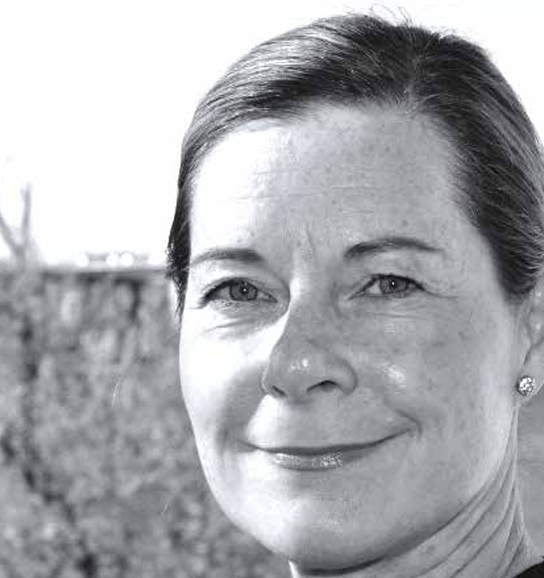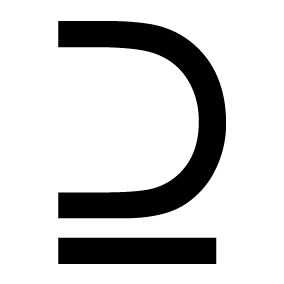
Design at Swedbank
There are 100+ designers in Swedbank, organized in two different units of the bank – Channels and Products. Together they are a competence hub – Community of Professionals – collaborating to bring forth the customer & user perspective in the bank. There is a design system team and a design operations team that supports consistency, scalability, and efficiency across design efforts.
Annette is leading the product design organization. Most designers collaborate with product owners and developers in various cross-functional teams, to deliver on business priorities for web and app experiences. Some senior designers work with business owners to identify needs and decide on priorities, while there is also a service design team that works on initiatives across products and channels.
Group Product Design
- UX Designers (32 people)
- UX Writers (7 people)
- User Researchers (3 people)
- Service Designers (4 people)
In Talks with Annette Öberg

In just four years, Annette Öberg, Head of UX & Service Design at Swedbank, has strategically built a robust design organization of nearly 50 talented individuals within “Group Products and Advice.” Her structured approach not only defines design roles but continuously strengthens them, laying a solid foundation for long-term growth and innovation. A key part of her strategy is cultivating a thriving design culture—even in complex, large-scale environments.
“My strategy focuses on raising design maturity among key stakeholders by tailoring my communication to resonate with each manager’s perspective.”
1. Proving the Value of Design
Building Relationships with Managers
“Our designers belong to a unified design organization, but they work across most product areas in the bank. For me, it’s been essential to build trust with leaders in those areas—to have an open, constructive dialogue and to clearly communicate our goals for design competence, both short- and long-term. It’s been especially important that managers across the organization feel that we, as a central yet embedded design team, truly support them and deliver real value.
At one point, I found myself in a discussion with senior management about whether we should distribute designers directly into product teams or keep them part of a centralized, distributed competence hub. Hearing senior managers—those I had worked with closely—argue for the latter, saying it was working well, felt like a real confirmation that my approach was the right one. Had they been unfamiliar stakeholders, I’m not sure we would’ve had the same outcome. Distributing design can absolutely be the right approach in certain contexts, but I don’t believe the time is right for us. Decisions like that need to be well-considered.
My strategy has always been to raise design maturity by speaking each manager’s language. They often play a key role in how design is perceived and prioritized. But managers don’t always realize—or want to admit—how limited their understanding of design might be. That’s why I take every chance to talk about the business value of design. By recognizing each manager’s unique perspective and tailoring my message, I help them see why design competence matters. It’s about creating both understanding and a sense of need. This approach has helped us grow, hiring more designers, defining new roles, and making a real impact both on what we do, and how we work in product teams.”
Show, not just tell
Annette emphasizes the importance of demonstrating real outcomes to gain trust from managers and other stakeholders.
“Gaining trust from senior leadership depends on showing concrete results that prove the strategic value of design. When the design unit was first established during a major reorganization, we focused on showcasing how design could drive measurable business impact. We used past project results as proof points and actively sought out ongoing or upcoming initiatives where our skills were clearly needed. Even when we didn’t have enough resources to support every project, we made a point of contributing wherever we could, always with the goal of showing our value.
One particularly strong example came from a department that needed to create a comprehensive service blueprint. We helped them bring in an external consultancy to lead the project, while staying involved behind the scenes. We connected the consultants with our designers, who were able to share previous work and insights that helped fill out the blueprint. Thanks to that collaboration, the agency could focus on the right things and work far more efficiently, because we had already done much of the groundwork. The consultants delivered better results within the limited time they had, the internal client was happy, and design’s value became unmistakably clear. This was a concrete example where we could directly show our contribution—not just through business impact, but in comparison to consulting costs. And I think this project really helped raise design maturity in that product area. It put our team on the map.”
2. Recruitment
Take the opportunity to strengthen design roles during reorganization
Reorganizations can be powerful opportunities to elevate the role of design within a company and Annette has used these moments to advocate for and secure new design roles.
“In a company as large as ours, reorganizations—whether big or small—create unique chances to reinforce the role of design. When a new product unit was formed four years ago, there was a clear demand for design resources, though at the time, designers were organized elsewhere in the company. As discussions started around the competencies needed, I saw an opportunity to highlight the critical role of design in product development and to make the case for building that competence into our organization. I gained support from key people involved in recruitment decisions. There was this shared energy, a sense of creating something new that didn’t exist yet. I had people around me with that mindset, and we made the most of the lessons from before the reorganization. We kept what worked and added what had been missing.
Like many other companies, Swedbank is also navigating an agile transformation. But agile frameworks don’t always give design the visibility or space it deserves. If we had simply followed the playbook—sticking to the planned roadmaps—design would’ve remained on the sidelines. We wouldn’t have secured the roles or the influence we need. But thanks to the commitment of our designers, we’ve been able to raise awareness of why design must be integrated at every level of the agile setup, from train management and product owners to business owners and portfolio governance.
The work is starting to pay off. The team now has a seat at the table in key forums across different levels of the organization. One notable example is the introduction of a new role: Customer Experience Business Owner (CXBO). This position now plays a central part in several parts of the organization. We’re no longer just shaping how we work within the agile framework, we’re also influencing what gets prioritized. And even the name CXBO brings value, it helps signal the presence and importance of design competence in decision-making.
Another breakthrough came when I was able to expand the team with UX Writers, a competence I strongly believed the organization needed. During one reorg, I took the opportunity to explain the role and value of UX Writing to management. I knew that if I could just hire that first UX Writer—and find the right person—the impact would be clear. And it worked: we went from zero to seven UX Writers!”
3. Organizational Structure and Design Roles
Structuring Designers for Maximum Impact
The way a design organization is structured can deeply influence its success. Annette champions a hybrid model, combining the strength of a centralized community with the effectiveness of decentralized execution.
“We have a strategy for how we structure design. We centralize design overall, but we still decentralize designers into product teams, into the operational development work, where we turn insights into real outcomes and deliver value to customers. I believe in a unified design function because our collective strength helps build maturity at all levels. If we were to fully decentralize, there’s a risk that designers would get absorbed into parts of the organization that aren’t yet mature enough, places where they wouldn’t have the impact they’re capable of.
Designers are naturally good at collaborating and learning from each other. It’s part of how we work, we look for connections and synergies to create value in the bigger picture. That’s why staying connected through a central community is so important. At the same time, designers need to be embedded in the teams shaping the bank’s digital products. That’s where their insights make a real difference. That’s why I believe in the hybrid model—centralized to build strength and unity and decentralized to ensure we stay close to customer needs during product development. It’s at the intersection of strategy and execution that design shapes the future of customer experiences.”

